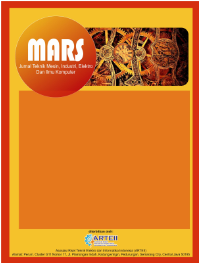Application of Neurocomputer Interfaces for Rehabilitation of Patients With Disorders of Motor Functions of the Nervous System
DOI:
https://doi.org/10.61132/mars.v3i1.732Keywords:
Brain-computer interface, EEG, Neurointerface, neurorehabilitation, exoskeletonAbstract
Brain-computer interface (BCI) technology allows a person to learn to control external actuators by means of arbitrary modification of their own EEG directly from the brain without involving nerves and muscles in this process, allowing to control external technical systems directly by brain signals. In the last two decades, BCI technology has been rapidly developing: its areas of application are expanding, new types of sensors for recording brain signals are being proposed, the quality of their recognition is improving, and methods for training subjects to control BCI are being perfected. At the beginning, the main goal of BCI development was to replace or restore motor functions of a person suffering from neuromuscular disorders. Currently, the tasks of BCI development have significantly expanded, increasingly capturing various spheres of life of a healthy person.
References
Alam, M., Rodrigues, W., Pham, B. N., & Thakor, N. V. (2016). Brain-machine interface facilitated neurorehabilitation via spinal stimulation after spinal cord injury: Recent progress and future perspectives. Brain Research, 1646, 25–33.
Al-Ani, T., & Trad, D. (2010). Signal processing and classification approaches for brain-computer interface. INTECH Open Access Publisher.
Angeli, C. A., Boakye, M., Morton, R. A., Vogt, J., Benton, K., Chen, Y., Ferreira, C. K., & Harkema, S. J. (2018). Recovery of over-ground walking after chronic motor complete spinal cord injury. New England Journal of Medicine, 379, 1244–1259.
Bakker, M., De Lange, F. P., Helmich, R. C., Scheeringa, R., Bloem, B. R., & Toni, I. (2008). Cerebral correlates of motor imagery of normal and precision gait. NeuroImage, 41(3), 998–1010.
Bakker, M., Overeem, S., Snijders, A. H., Borm, G., van Elswijk, G., Toni, I., & Bloem, B. R. (2008). Motor imagery of foot dorsiflexion and gait: Effects on corticospinal excitability. Clinical Neurophysiology, 119(11), 2519–2527.
Batula, A. M., Mark, J. A., Kim, Y. E., & Ayaz, H. (2017). Comparison of brain activation during motor imagery and motor movement using fNIRS. Computational Intelligence and Neuroscience, 2017, 5491296.
Bentley, L. D., Duarte, R. V., Furlong, P. L., Ashford, R. L., & Raphael, J. H. (2016). Brain activity modifications following spinal cord stimulation for chronic neuropathic pain: A systematic review. European Journal of Pain, 20(4), 499–511.
Bobrova, E. V., Bogacheva, I. N., Lyakhovetskii, V. A., Fabinskaja, A. A., & Fomina, E. V. (2015). Memorization of sequences of movements of the right and left hand by right- and left-handers. Human Physiology, 41(6), 629–635.
Bobrova, E. V., Lyakhovetskii, V. A., & Borshchevskaya, E. R. (2013). The role of “prehistory” in the reproduction of sequential movements of the right and left hands: Encoding of positions, movements, and sequence structure. Neuroscience and Behavioral Physiology, 43, 56–62.
Bonizzato, M., Pidpruzhnykova, G., DiGiovanna, J., Shkorbatova, P., Pavlova, N., Micera, S., & Courtine, G. (2018). Brain-controlled modulation of spinal circuits improves recovery from spinal cord injury. Nature Communications, 9(1), 3015.
Borra, E., & Luppino, G. (2017). Functional anatomy of the macaque temporo-parieto-frontal connectivity. Cortex, 97, 306–326.
Bouton, C. E. (2020). Merging brain-computer interface and functional electrical stimulation technologies for movement restoration. Handbook of Clinical Neurology, 168, 303–309.
Carrere, L. C., Escher, L. G., Gentiletti, G. G., & Tabernig, C. B. (2021). A foot motor imagery brain-computer interface with realistic visual feedback: Preliminary evaluation in healthy and stroke subjects. Research on Biomedical Engineering, 37(4), 595–604.
Cervera, M. A., Soekadar, S. R., Ushiba, J., Millán, J. d. R., Liu, M., Birbaumer, N., & Garipelli, G. (2018). Brain-computer interfaces for post-stroke motor rehabilitation: A meta-analysis. Annals of Clinical and Translational Neurology, 5(5), 651–663.
Corsi, M.-C., Chavez, M., Schwartz, D., George, N., Hugueville, L., Kahn, A., Dupont, S., Bassett, D., & Fallani, F. De Vico. (2019). Looking for cortical patterns of successful motor imagery-based BCI learning. 8th Graz Brain-Computer Interface Conference 2019, Graz, 16–21.
Cui, Z., Li, Y., Huang, S., Wu, X., Fu, X., Liu, F., Wan, X., Wang, X., Zhang, Y., Qiu, H., Chen, F., Yang, P., Zhu, S., Li, J., & Chen, W. (2022). BCI system with lower-limb robot improves rehabilitation in spinal cord injury patients through short-term training: A pilot study. Cognitive Neurodynamics, 16(6), 1283–1301.
Frolov, A. A., Biryukova, E. V., Bobrov, P. D., Kurganskaya, M. E., & Pavlova, O. G. (2016). Almanac of Clinical Medicine, 44(3), 280–286.
Gad, P., Kreydin, E., Zhong, H., & Edgerton, V. R. (2020). Enabling respiratory control after severe chronic tetraplegia: An exploratory case study. Journal of Neurophysiology, 124(3), 774–780.
Kaplan, A. Y. (2016). Neurophysiological foundations and practical implementations of brain-machine interface technology in neurological rehabilitation. Human Physiology, 42(1), 118–127.
Lebedev, M. A., & Nicolelis, M. A. (2017). Brain-machine interfaces: From basic science to neuroprostheses and neurorehabilitation. Physiological Reviews, 97(2), 767–837.
Oh, K. K., Guan, C., Chua, K. Q. G., Oh, B. T., Gravy, C., Money, C., Phua, K. S., Chin, Z. Y., & Zhang, H. (2010). Clinical study of neurorehabilitation in stroke using EEG-based motor imagery brain–computer interface with robotic feedback. Engineering in Medicine and Biology Society (EMBC), 2010 Annual International Conference of the IEEE, 5549–5552.
Portsevsky, A. K. (2017). Hardware and software complexes of the "BOS-TEST" and "BOSS-LAB" series. Modern Innovative Medical Technologies, 8, 274–290.
Downloads
Published
How to Cite
Issue
Section
License
Copyright (c) 2025 Mars : Jurnal Teknik Mesin, Industri, Elektro Dan Ilmu Komputer

This work is licensed under a Creative Commons Attribution-ShareAlike 4.0 International License.





